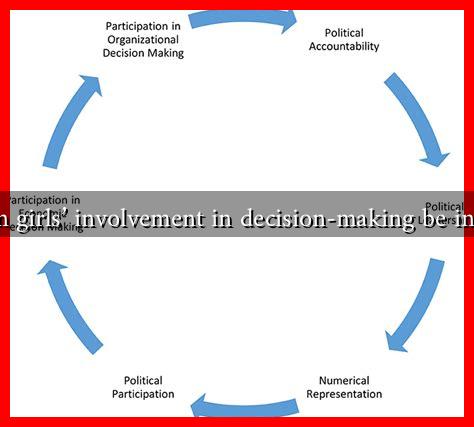-
Table of Contents
- How Can Girls’ Involvement in Decision-Making Be Increased?
- The Importance of Girls’ Involvement in Decision-Making
- Barriers to Girls’ Involvement
- Strategies to Increase Girls’ Involvement
- 1. Education and Awareness Programs
- 2. Mentorship and Role Models
- 3. Advocacy and Policy Change
- 4. Community Engagement
- Case Studies of Success
- Conclusion
How Can Girls’ Involvement in Decision-Making Be Increased?
In recent years, the conversation surrounding gender equality has gained significant momentum, particularly in the context of decision-making processes. While strides have been made, girls and young women continue to face barriers that limit their participation in decision-making roles across various sectors, including politics, education, and community leadership. This article explores effective strategies to enhance girls’ involvement in decision-making, supported by relevant examples and statistics.
The Importance of Girls’ Involvement in Decision-Making
Involving girls in decision-making is crucial for several reasons:
- Empowerment: Participation in decision-making fosters a sense of agency and self-worth among girls.
- Diverse Perspectives: Girls bring unique insights and experiences that can lead to more comprehensive and effective solutions.
- Future Leaders: Engaging girls in decision-making prepares them for leadership roles in the future.
According to a report by the United Nations, when women and girls are involved in decision-making, the outcomes are more equitable and sustainable. This highlights the need for systemic changes to facilitate their participation.
Barriers to Girls’ Involvement
Despite the recognized importance of girls’ involvement, several barriers persist:
- Cultural Norms: In many societies, traditional gender roles discourage girls from participating in decision-making.
- Lack of Education: Limited access to education restricts girls’ knowledge and confidence in making decisions.
- Insufficient Support Systems: A lack of mentorship and role models can hinder girls’ aspirations to engage in leadership roles.
Addressing these barriers is essential for creating an environment where girls can thrive and contribute meaningfully to decision-making processes.
Strategies to Increase Girls’ Involvement
To enhance girls’ participation in decision-making, several strategies can be implemented:
1. Education and Awareness Programs
Education is a powerful tool for empowerment. Programs that focus on leadership skills, critical thinking, and civic engagement can equip girls with the necessary tools to participate in decision-making. For instance, organizations like Girls Inc. provide educational programs that encourage girls to develop their leadership potential.
2. Mentorship and Role Models
Connecting girls with mentors who have experience in decision-making roles can inspire and guide them. Mentorship programs can help girls navigate challenges and build confidence. For example, the National Mentoring Partnership has initiatives that focus on empowering young women through mentorship.
3. Advocacy and Policy Change
Advocating for policies that promote gender equality in decision-making is crucial. Governments and organizations should implement quotas or incentives for female representation in leadership roles. Countries like Rwanda have made significant progress by instituting policies that ensure women’s participation in government, resulting in over 60% of parliamentary seats being held by women.
4. Community Engagement
Engaging communities in discussions about the importance of girls’ involvement in decision-making can shift cultural norms. Community-based initiatives that highlight successful female leaders can serve as powerful examples. Programs like Girls Leadership work to empower girls through community engagement and leadership training.
Case Studies of Success
Several initiatives around the world have successfully increased girls’ involvement in decision-making:
- Girl Up: This United Nations Foundation initiative empowers girls to advocate for gender equality and provides them with resources to influence policy changes.
- She Leads: A program in Australia that trains young women to take on leadership roles in their communities, resulting in increased participation in local governance.
Conclusion
Increasing girls’ involvement in decision-making is not just a matter of fairness; it is essential for creating a more equitable and sustainable future. By addressing barriers, implementing effective strategies, and learning from successful case studies, we can empower girls to take their rightful place in decision-making processes. As we continue to advocate for gender equality, it is crucial to recognize that the voices of girls are not just important—they are indispensable for the progress of society as a whole.




